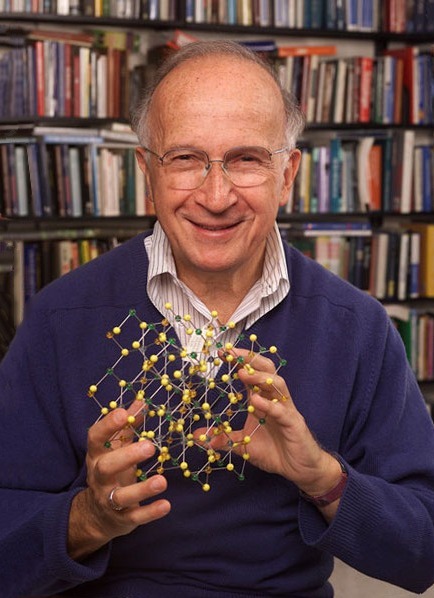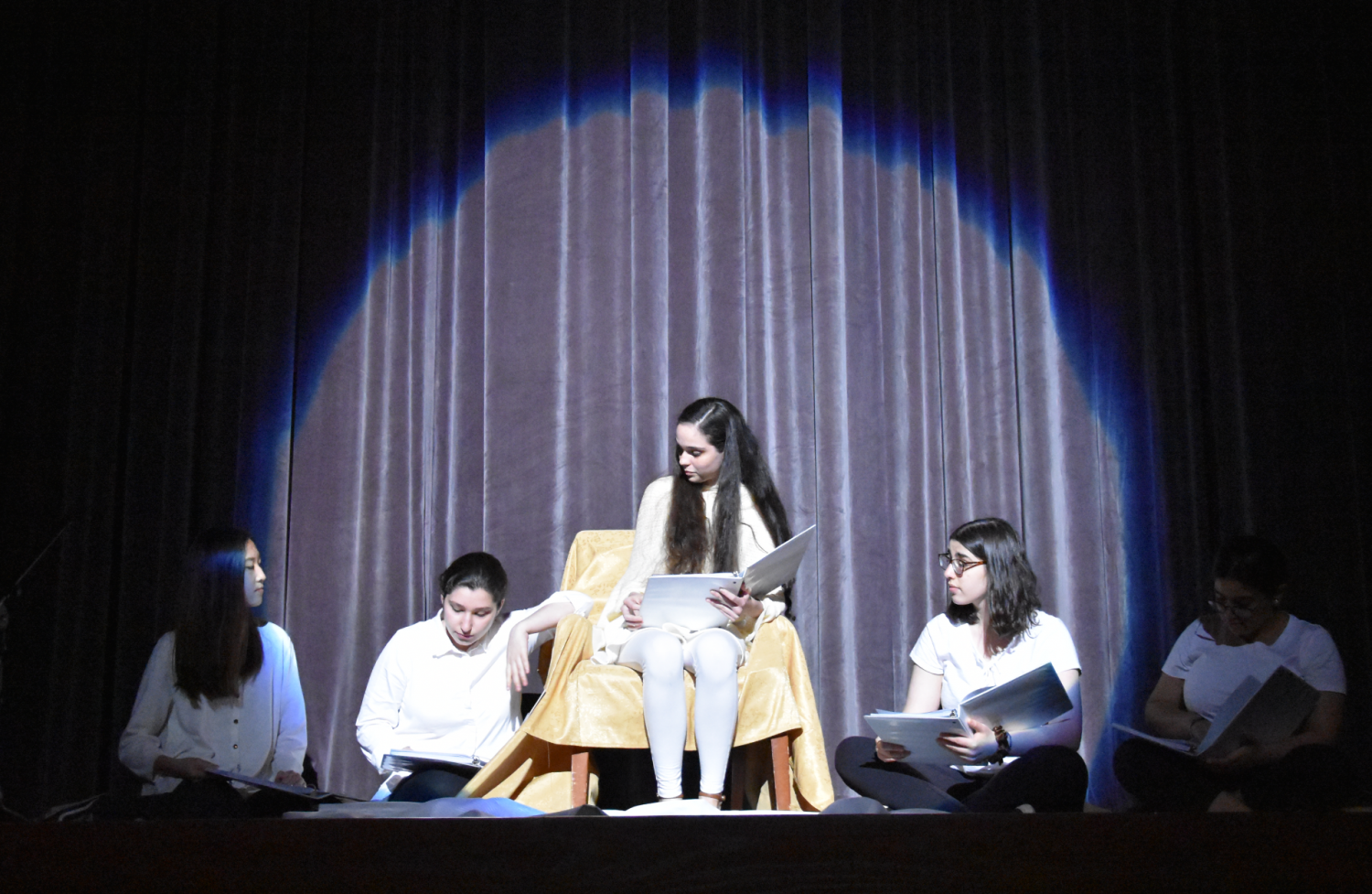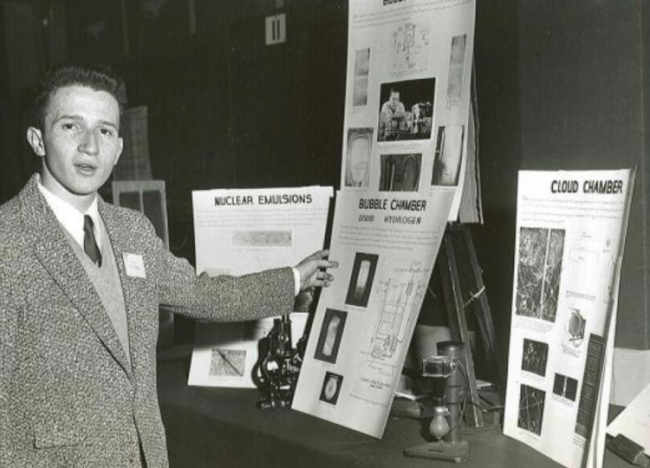2022 Benefit Honoree: Roald Hoffmann ’55
Please save the date for our second annual gala, the 2022 Benefit for Stuyvesant, on Tuesday, May 24, 2022 at Tribeca Rooftop. We will be honoring Roald Hoffmann, PhD ’55 with the 2022 Golden Pegleg. Read more about Dr. Hoffmann and his varying achievements in chemistry and the arts below.

Most Nobel Prize winners achieve that superlative honor by dedicating their lives, or at least their careers, to a single field. Not so Dr. Roald Hoffmann who, after winning the Nobel Prize in Chemistry at the age of 44, became a published poet and playwright, and in 1996 became the Frank H.T. Rhodes Professor of Humane Letters at Cornell University. Today, he describes his work as the “land between chemistry, poetry, and philosophy.”
Dr. Hoffmann was born in 1937 in Złoczów, Poland (which was also the birthplace of beloved Stuyvesant principal, Abraham Baumel, 11 years earlier). When Hoffmann was 4, the Nazis marched into his hometown and forced his family into a labor camp and later into hiding. Only 200 out of the 4,000 Jews from his hometown survived to the end of World War II. Decades later, he penned some of his thoughts and memories from that time into a semi-autobiographical play, “Something that Belongs to You.” The play tells the story of Frieda Pressner and her son Emile, who survived the Holocaust in German-occupied Poland by hiding in the attic of a Ukrainian schoolhouse, just as Hoffmann and members of his family did from January 1943 to June 1944. The play explores interpersonal relationships during the Holocaust and examines what it meant to be a rescuer, a collaborator, and a victim.
Excerpts from “Something that Belongs to You” were performed by the Stuyvesant Theater Community in June 2019. Seeing his family’s experience portrayed by and for a younger generation, “meant so much to me,” Hoffmann said.

Dr. Hoffmann entered Stuyvesant in 1951, two years after he and his family emigrated to America from Poland. Many of his classmates were, like him, refugees from Europe and survivors of the war. “Our beginnings may have been difficult,” he said, “but we all shared an immigrant experience of pure joy at being in America. Everything in the world was now opened to us. And Stuyvesant became the gateway for so many of us to the world.”
At Stuyvesant, Hoffmann read his first books of great literature, played soccer, met teachers and classmates that amazed and challenged him, and got his first exposure to science and research. He was a finalist in the 1955 Westinghouse Science Talent Search for his project measuring the movement of cosmic ray particles. The summer research job that Hoffmann obtained from the exposure of being a Westinghouse finalist plus the sum of all his other experiences left a tremendous impact on him. “I still my remember my teachers in biology, literature and mathematics to this day,” he said.
[My classmates and I] shared an immigrant experience of pure joy at being in America. Everything in the world was now opened to us. And Stuyvesant became the gateway for so many of us to the world.
Though Hoffmann’s parents encouraged him to practice medicine, he became more interested in art history and literature. He ended up studying chemistry at Columbia, a decision he still calls a “compromise” between his wishes and his parents’. He graduated summa cum laude in only three years and went to Harvard for his graduate work in chemistry. Reflecting back on these decisions, Hoffmann said, “You don’t have to give up your passion for your profession. I was passionate about poetry and art history. And yes, I became a chemist, grew passionate about that field, which turned out to be just right for me. But I also kept those other interests.”
Hoffmann reached the pinnacle of excellence in chemistry. Between 1962 and 1965, he worked with Robert B. Woodward at Harvard to develop the Woodward-Hoffmann rules, which are regarded as the most important conceptual advancement in theoretical organic chemistry in the last century. The rules gave chemists a powerful tool for predicting the pathways that chemical reactions may follow. This work, completed before he was 32 years old, garnered him the 1981 Nobel Prize in Chemistry which he shared with Japanese chemist, Kenichi Fukui. (Woodward passed away before 1981 or it would have been his second Nobel prize.) In 1990, Hoffmann also received the Priestley Medal of the American Chemical Society, chemistry’s highest honor.
In the 1980s, after 20 years of balancing the demands of his career and family, Hoffmann returned to his passion for poetry. His first poems were published in 1984, seven years after he first started writing poetry. To date, his six collections of poetry have been published in English, Spanish, and Russian. His byline also appears on three plays and five books of nonfiction with subjects ranging from philosophy and art to Jewish traditions, which have been translated into 10 other languages.

Persistence is a subtle but prevalent thread throughout Dr. Hoffmann’s life. From his survival of the Holocaust to his pursuit of the arts, he has proceeded forward despite the obstacles. Even his success in chemistry brought new challenges. When asked what he considers to be his proudest achievement, Hoffmann answers partially in jest that it was “surviving the Nobel Prize.” He explains that after such an accomplishment, “you might not want anything more. But at age 44, you can’t just stop living. The Nobel Prize actually made it harder for me to do the same work that I did before. My work was criticized much more strongly. It became harder to get research support from government agencies. Everyone’s expectations are now a lot higher,” he said.
Instead, he said, he is most proud of his family (he and his wife Eva married in 1961 and have two children, Hillel Jan and Ingrid Helena) and the good and interesting science he has done for the 38 years after that prize. The bulk of his 650+ scientific articles, including some of his most cited ones, were published after he received the Nobel Prize.
You don’t have to give up your passion for your profession. I was passionate about poetry and art history. And yes, I became a chemist, grew passionate about that field, which turned out to be just right for me. But I also kept those other interests.
We hope that you will join us on May 24, 2022 at Tribeca Rooftop to honor Dr. Roald Hoffmann and his life’s work. May he serve as an example to all Stuyvesant alumni to continue to persist after every setback and success and to pursue your passions as well as your profession.
